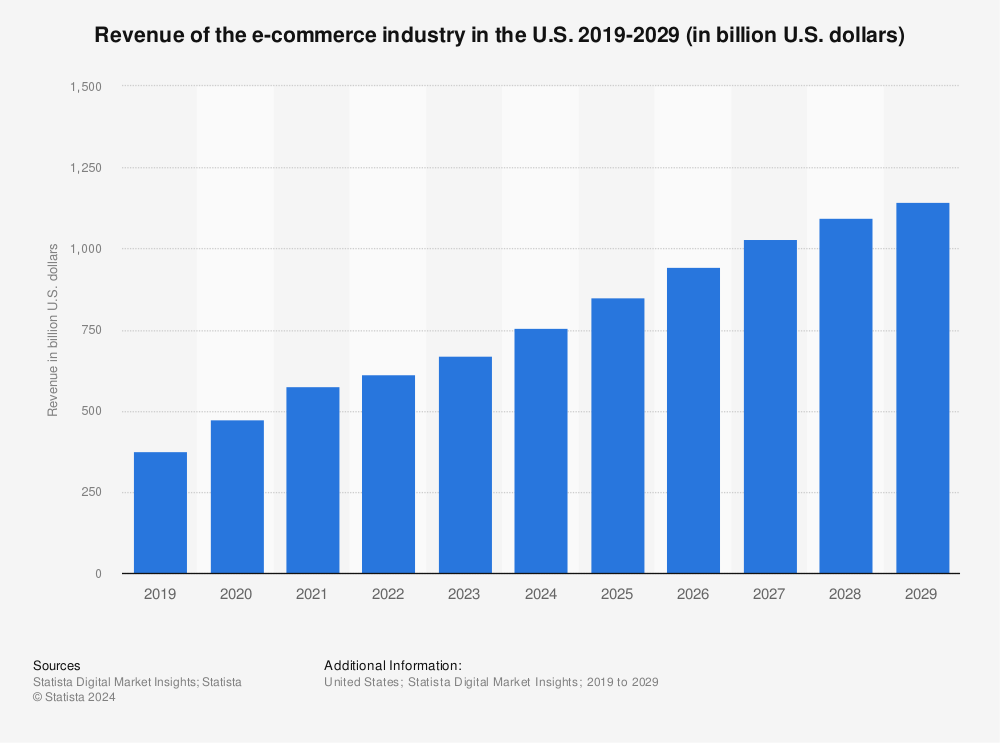
What is Mobile Commerce?
Mobile commerce (alternately known as m commerce or m-commerce) is the browsing, buying, and selling of products and services on mobile devices such as cellphones or tablets. In other words, it's a complete online shopping experience, but with all the convenience of being on a cellphone or tablet.
Mobile Commerce (M-Commerce) Statistics
M-commerce is booming, and not showing any signs of slowing down. Within the next two years, it is expected that the majority of purchases will be completed using mobile devices.
- 96% of Americans own a cellphone (Source: Pew Research Center
- 8 out of 10 Americans shop on their mobile devices (Source: Pew Research Center
- Mobile commerce is expected to outpace non-mobile commerce in 2021 (Source:Statista
- Mobile digital advertising spend is nearly double that of desktop advertising spend—$71B was spent on mobile advertising in 2018, while only $37B was spent on desktop. (Source: Journalism.org
- On Black Friday of 2018, 66% of shopping was done on mobile devices (Source:PixelUnion
Types of Mobile Commerce
Mobile commerce doesn't just refer to buying a product online—it includes all purchase decision behaviors made using a mobile device.
The different types of mobile commerce include:
- Browsing products online using a mobile device
- Searching for specific products online using a mobile device
- Reading product reviews or viewing product comparisons on a mobile device
- Purchasing app-economy services (such as rideshare or food delivery apps)
- Purchasing or renting digital content (paid apps, video, music, etc.) on a mobile device
- Interacting with branded apps (such as the Amazon shopping app) on a mobile device
- Mobile banking
- Mobile retail payments (such as Samsung Pay or Apple Pay)
- Mobile person-to-person payments (such as Venmo or the Cash app)
With the rise of mobile technology, it is becoming less valuable to think about what is mobile commerce and what isn't—almost all types of commerce, from shopping to investing, are already being done on mobile. As such, much of the discussion around mobile commerce focuses on user experiences when engaging in mobile commerce.
The Future of Mobile Commerce
The most prominent trend of mobile commerce is its market share growth. M-commerce spending in 2018 totalled 501 billion, expected to grow to 740B by 2023:

Source: Statista
Another trend in m-commerce is that customers desire more information on mobile websites. Studies show that 80% of smartphone users want more product information when shopping on their mobile devices. A large part of m-commerce's appeal may be convenience, but if that convenience comes at the sacrifice of information, customers will be sure to look elsewhere. Make sure to include all of the information available on your desktop pages in a mobile-friendly format—accordion menus and dropdowns can help control page length.
The last big trend, by far, is the rise of tablet commerce. Much of it has to do with the nature of tablets themselves. With their larger screens and portability, tablets make it easier to navigate mobile ecommerce websites. With these features, it's no surprise that 55% of tablet owners use their tablets for online shopping, whereas only 28% of smartphone owners shop on that device.
With all its growing clout, m-commerce is the rising star of the ecommerce world. By understanding it and keeping tabs on where it's going, business owners put themselves in the best position to take advantage of all m-commerce has to offer.











